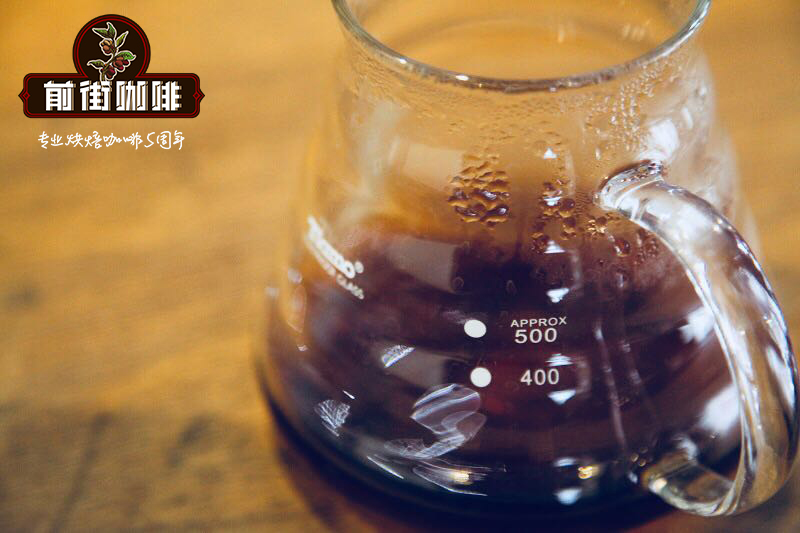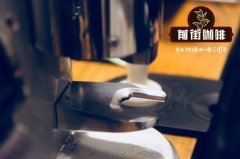How to choose the right beans for you? Coffee beans recommended?

Professional coffee knowledge exchange more coffee bean information please follow the coffee workshop (Wechat official account cafe_style)
The first move: fresh
Definition of fresh coffee beans
There will be differences due to ring temperature, humidity, packaging and preservation methods. In terms of Taiwan's environmental conditions, coffee beans are stored in an one-way breathable bag and stored at room temperature. "within two weeks after baking," they are considered fresh coffee beans.
Roasted coffee beans are cooked food, of course they should be fresh!
Except for a few fermented and dried foods that have been specially treated for long-term preservation. The vast majority of the food you eat in the body should be fresh. Coffee in your mouth, of course, is no exception. Coffee beans are the seeds of coffee fruit, and raw beans, like unprepared grains, are easier to preserve. Roasted cooked beans are like baked edible nuts such as walnuts, peanuts and pumpkin seeds. If you keep it at room temperature, it is easy to produce the smell of fuel consumption.
Why is it difficult to preserve roasted coffee beans?
. first of all, the better Arabica coffee beans, the more fat they contain, the more delicious they are (actually nuts)
. after high-temperature roasting of coffee beans, the cell wall is damaged, the shell is brittle, the contents of hidden coffee beans are more likely to come into contact with oxygen in the air, and begin to decay.
If you have ever cared about cooking oil, you can understand. The oil with the majority of unsaturated fatty acids has poor tolerance to "light, heat and oxygen". So high-quality olive oil, flaxseed oil, etc., are encapsulated in opaque glass bottles and refrigerated in the refrigerator. The best way to eat is to drench it directly on the food. Coffee oil, which accounts for the majority of unsaturated fatty acids, is no exception.
A chronic disease is not formed in a day.
Well, maybe you'd say... Many well-known coffee shops and supermarkets sell coffee beans that have been roasted for days or even months, aren't they bought and drunk by many people? And you haven't heard of any cases of emergency treatment? I've drunk it myself, but I don't think there's something wrong with my body.
In modern society, there are so many strange "slowness. Sex. Disease" is often caused by eating chemically processed and stale food for a long time. Stale coffee beans, although there is no risk of acute disease or immediate death. If you care about the health of yourself and your family, the first and most important thing is to "drink coffee made from fresh coffee beans".
How do we know if it's fresh?
First, judge the mode of operation of the store.
First, mark "baking date": note that the baking date is marked on the purchase bag, not the shelf life.
Second, in addition to order baking, it also provides the freedom to choose the degree of roasting: the roasted coffee begins to decay and stale. Boast order baking without letting you choose the baking degree. It is possible that a batch of baked goods is left behind and the goods are shipped slowly only when there are orders.
Judgment 2. Judging from coffee beans
Smell: fresh beans have only aroma, smell fuel consumption, it must not be fresh coffee beans.
Second, appearance: this is only applicable to deep-roasted coffee beans (aroma roasting degree medium-deep roasting). If you look at the coffee bean watch before grinding it, the foggy oil stain means that it is not fresh coffee bean. It is easy to learn to judge this. It is easy to see coffee beans with "expiration date only" on the market. Buy them and observe them. Light roasted coffee beans (equivalent to aroma roasting degree light ~ medium +) it is difficult to judge whether coffee beans are fresh or not from the surface of beans.
Third, grinding: after grinding fresh coffee beans, whether hand-washed or siphoned, it is easy to see an expanded or thicker powder layer when brewing.
The second trick: flavor
Complex flavor (Flavor)
Coffee is one of the most complex natural drinks in the human world. Through our simplification, we can tell you directly what you have learned, so that you don't waste money and choose the coffee beans that suit you.
The American Fine Coffee Association (SCAA) has always been committed to establishing a coffee language to facilitate coffee lovers to communicate with each other. Good intentions and hard work are also commendable. It is a pity that the content is too complicated and not suitable for circulation by the general public.
Now, put aside the academic school and proceed from practical experience. Start with the following points to quickly choose your favorite flavor.
First understand the treatment of raw beans.
"washed beans" is the best way to remove turnips and preserve turnips to ensure the consistent quality of raw coffee beans. After washing, the raw beans are sour, clean and have no miscellaneous taste.
"sun beans" pick ripe and full coffee fruits, dry them in the sun and then prepare them. This method can completely retain the contents of the fruit and bring high-quality flavors such as low acidity, thick aroma, sweetness and taste.
"Honey treatment" retains 100% pectin, dried on a scaffolding off the ground and then prepared. Honey-treated coffee beans can fully retain the sweetness and aroma of coffee pulp, as well as a thicker taste than water washing.
The "wet planing bean" removes the seed shell in advance and carries out the drying process. This helps to quickly shorten the drying time and reduce the sour taste produced during the fermentation of raw coffee beans. Also created a mellow, woody, fruity, fairy grass flavor.
"Wind-soaked beans" have been exposed to the moist monsoon environment for a long time. The color of coffee beans has changed from dark green to yellowish brown of rice, and the sour taste of coffee is almost absent. Wind-stained beans have a strong nutty and shell flavor, taste full of tea, very similar to the flavor of Xuanmi tea.
The relationship between the treatment methods of raw beans and their flavor
Here is a comparison of "the same coffee fruit".
"Flower fragrance" washed beans > honey treatment > sun beans > wet planing beans > wind-stained beans
"Fruit fragrance" sun bean > honey treatment > wet shaved bean > washed bean > wind-stained bean
"acidity" washing beans > honey treatment > sun beans > wet planing beans > wind-stained beans
"sweetness" sun-dried beans > honey treatment > wet planed beans > washed beans > wind-stained beans
Finally, match the degree of baking (look down at ↓)
The third trick: baking degree
The importance of baking degree
From the second wave of "re-baking" to the third wave of "shallow baking". The tide of coffee changed in modern times, that is, it began with a very different degree of roasting.
Think about the experience of drinking tea?
Tea light heat baking → fragrance, light taste (throat rhyme light) | medium heat baking → fragrance elegant, sweet taste (throat rhyme is good) | heavy fire baking → aroma calm, taste sweet (throat rhyme is the best)
Is there a great difference in aroma and taste of tea leaves with different roasting degrees from shallow to deep? Coffee roasting is the same thing.
Baking degree vs. Flavor
Light ~ medium roast + coffee beans
Shallow baking: full of aroma and strong acidity. Suitable for you with "special needs"
Medium roasting: retains most aroma and bright fruit acid; it is recommended for coffee "the shallowest roasting degree" for beginners.
Medium baking +: soft acidity
Because there is little damage to the cell wall, and most of the oil is still preserved in the cell wall of the bean body. The degree of carbonation is not deep, retaining the flavor and sour taste of the beans themselves (the special local / regional flavor of the producing area). After high-quality roasting, boutique coffee beans can drink fruity / sour aromas such as apples, lemons and oranges.
Medium and deep roasted coffee beans
Medium and deep baking: at the expense of most of the acid and fragrance, the aromas of → caramel, nuts, malt and chocolate brought by the caramel reaction begin to highlight.
Deep baking: the taste is mellow and caramelized so that the flavor begins to be bitter. Because of the large firepower baking, there is an obvious smell of wood and smoke.
The cell wall is carbonized and coffee oil is added to add a mellow taste. Medium and deep roasting will have obvious flavors of nuts, caramel and chocolate, while deep-roasted coffee beans are easy to drink wood, spices, tobacco and other flavors.
Coffee beans must be "fresh"
Because... The "fuel-guzzling smell" of expired coffee beans is enough to cover all the good taste.
"fresh definition" coffee beans are stored in an one-way breathable bag and stored at room temperature. "within two weeks after roasting" are considered fresh coffee beans.
"the method of selection" selects coffee beans that are roasted by order, can be customized, and are marked with baking date.
Important Notice :
前街咖啡 FrontStreet Coffee has moved to new addredd:
FrontStreet Coffee Address: 315,Donghua East Road,GuangZhou
Tel:020 38364473
- Prev

What is manor coffee? What is manor coffee?
Professional coffee knowledge exchange more coffee bean information Please pay attention to the coffee workshop (Wechat official account cafe_style) the concept of coffee originated from wine farms, different farms can produce wine with their own unique flavor, so even if they are located in the same area, coffee beans produced by different farms have different planting methods, care methods and handling procedures, resulting in coffee.
- Next

What are the types of powder presses? Introduction to the principle of powder hammer?
Professional coffee knowledge exchange more coffee bean information Please follow the coffee workshop (Wechat official account cafe_style) speaking of powder hammer / presser, I believe baristas are no stranger. From the original filling and pressing apparatus to the various cloth powder machines and powder hammers now, and even the combination of the two, the ultimate goal is to make the powder bowl in the extraction of Italian concentration (espresso).
Related
- Beginners will see the "Coffee pull flower" guide!
- What is the difference between ice blog purified milk and ordinary milk coffee?
- Why is the Philippines the largest producer of crops in Liberia?
- For coffee extraction, should the fine powder be retained?
- How does extracted espresso fill pressed powder? How much strength does it take to press the powder?
- How to make jasmine cold extract coffee? Is the jasmine + latte good?
- Will this little toy really make the coffee taste better? How does Lily Drip affect coffee extraction?
- Will the action of slapping the filter cup also affect coffee extraction?
- What's the difference between powder-to-water ratio and powder-to-liquid ratio?
- What is the Ethiopian local species? What does it have to do with Heirloom native species?

